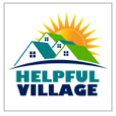THE VILLAGE MOVEMENT
(The core principles shown below are derived from the Village to Village Network’s Village 101 Toolkit. The Toolkit is a guide to establishing new villages.)
Historically, a village was a small population center, usually within a rural area, that was the primary point of social connection between people of that area. Residents of a village knew, interacted with, and often depended on each other. It was a community in its very basic sense.
A virtual village today can exist in rural, urban, or suburban neighborhoods, even those with greater populations than the historic village. But what still defines it is a distinct community in which people know, look out for, and assist one another. Across the United States and the world, several hundred virtual villages have already descended from the original village concept established in the Beacon Hill neighborhood of Boston in 2002, and many more villages are currently being established. This innovation is a real movement that has the potential to transform what it means to age within a community.
In 2010, the Village to Village Network was formed to support existing villages and villages in formation. On the Network’s website at www.vtvnetwork.org, you can find many articles and videos about villages and a map of villages across the U.S. with links to many of those village’s websites. Parkland Village is a member of the Network.
In a society that is increasingly getting older, it is critical that we provide grassroots support to the seniors among us as we all face the challenges of aging in place; that is, remaining in our homes and among our neighbors as long as it is possible and desirable to do so. A national AARP survey conducted in 2002 indicated that 82% of American seniors wanted to continue living in their current homes for the rest of their lives, even if they needed assistance in doing so.* A key factor in addressing that desire is finding opportunities to provide assistance, and the village model represents just such an opportunity.
The Village Model
The village model is based on the desires of community members to continue living in their own homes as they age and their lifestyles change over time, and involves a number of core principles:
- Mission - To help seniors retain their independence, stay in their homes, and remain active in their communities by providing them with support and enhancing their quality of life.
- Volunteerism – To provide programs and services through volunteer-based, neighbor-to-neighbor, pay-it-forward mutual support.
- Community and connection – To organize programs and services within small, geographically based communities, expanding connections among neighbors.
- Grassroots self-governance and self-support – To establish and manage an organization led by and for older adults.
- Support services – To help village members by providing transportation, light home repairs, friendly visitors, technology assistance, etc.
- Service and information resource center – Rather than duplicating existing programs, to act as a broker, consolidator, and connector to help members access the information and services they need.
- Collaboration – To promote cooperation among local villages, across generations, and with other senior service agencies, businesses, municipal programs, and strategic partners in the community.
*Aging-friendly communities and social inclusion in the United States of America, Scharlach and Lehning, Aging & Society, Cambridge University Press, December, 2012.
